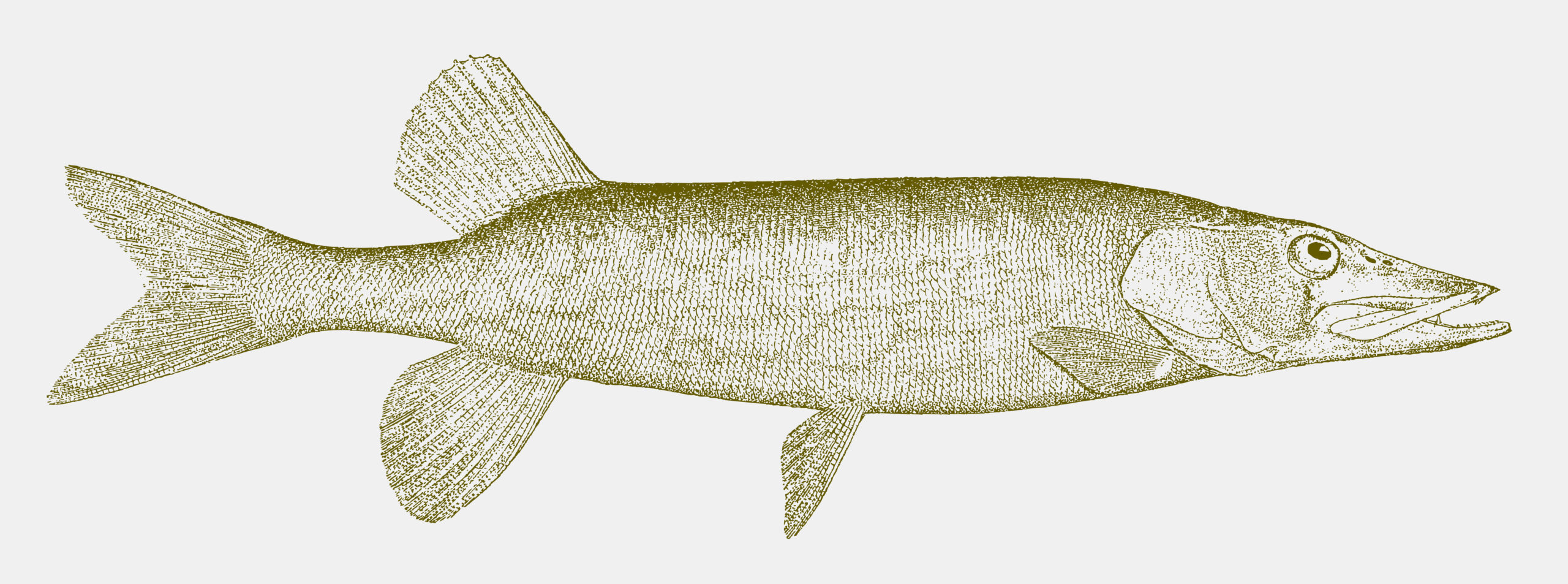Sporting Life

Hedge Your Bets with Chain Pickerel
By Dennis Doyle
My favorite 6-foot light spin rod arced hard over and, as I put my wrist into the strike, I could hear its graphite rod fibers start to creak and groan. When I eased up the pressure a bit, the unseen fish, sensing an advantage, turned and quickly retreated, thrashing noisily toward deeper water and sending my drag singing merrily. I had a chainsides on the line.
About an hour past, I had walked up to the edge of the creek and scanned across the water. It was flat, calm, bitterly cold, but no wind, no ice, and the tide looked just about a full flood. The opposite shore, a hundred yards distant, was equally as barren, though an early arriving osprey sailed high along its banks hoping to spot an easy meal.
Setting my tackle carrier down, a 5-gallon plastic bucket, I plucked out a short, light spin rod and then carefully threaded a couple of wriggling grass shrimps onto my two, 1/16 oz, chartreuse and black shad darts rigged under a bright orange, weighted casting float and pitched it far out over the water. Overturning my empty bucket, I sat on it and waited.
After about a quarter-hour of no action, I picked up my spare spin rod, bent a soft plastic, yellow, 4-inch paddle tail onto a small jig head and began casting in the same waters for pickerel.
The early days of the spring yellow perch run are like picking a single number to play on a roulette table. The odds are often considerably against you and patience is a must. But chain pickerel can often be a much better bet—a hedge on the perch bite as the Wall Street boys might refer to the practice.
The only downside to the chainsides is they’re not anywhere near the equal of perch on the table. Their large quantity of small bones makes eating them an ordeal, though their meat is sweet and tasty.
The minimum legal size is 14 inches but they are generally released when caught.
Pickerel, also known as grass pike, jack pike, and chainsides are a freshwater, predatory fish with a healthy tolerance for salt and are resident in most of our tributaries all the way down to where their waters pour into the Chesapeake. In the early spring, they group up and wait for the schools of yellow perch as they ascend to spawn in the headwaters.
A smaller cousin and quite similar to the great northern pike and the muskellunge, they can reach up to 30 inches but are generally about 19 to 20 inches. Slim and toothy, these water wolves feed on smaller perch, and minnows while patiently awaiting their own spawn which will occur shortly.
They are very aggressive and great sport to catch. They’ll readily take small surface plugs and crankbaits, soft paddle tail jigs, Mepps and safety pin type spinnerbaits, small spoons, especially those adorned with lip hooked minnows, and live minnows under a bobber as well as, sometimes, anything else you may be using for perch … so stay ready.
Fishfinder:
The yellow perch bite is on and the neds are up in the tributaries. The commercial season has closed on the Chester so opportunities may be better than normal on all the tribs there. Other waters provide mixed chances but the rule remains: go early and go often. Our normally horrid February weather remains just that, but the hardy angler will prevail. Pickerel fishing, as always, is still good despite the temps and they like minnows under bobbers and slowly retrieved spinnerbaits, especially squirrel tail Mepps, soft plastic jigs and topwater baits.
